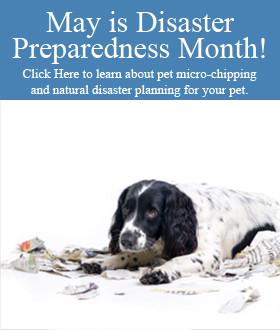Tug, a 13-year-old male neutered Schnauzer mix, was presented for gagging, lethargy, difficulty breathing and drooling for two days. On physical exam, Tug seemed to be uncomfortable, drooling, and had a painful abdomen and painful throat, with a mass just below the larynx (voice box). In his history, the owner’s children had given him some steak bones five to six days earlier. The possibilities for Tug’s condition were:
- bone stuck in his throat
- tumor in his throat
- abscess in his throat
Blood work was performed to determine if an abscess was involved. Other than indication of mild dehydration, due to not being able to drink very much, everything was normal. Tug was then sedated and an oral exam was performed. Sedation was needed to relax Tug so we could look as deep in his throat as possible. Nothing abnormal was seen on oral exam, other than Tug desperately needing a dental. X-rays were then taken of Tug’s throat. The X-rays revealed a large piece of bone stuck in the esophagus, below the larynx, pushing on the trachea (windpipe).
It was determined the best way to remove the bone was with an endoscope. Tug was hospitalized for about two days after the removal of the bone. He was placed on medication to help heal the irritation in the esophagus and decrease the scar tissue upon healing. Thankfully, Tug recovered well.
This is one of many reasons why bones should not be given to dogs. In Tug’s case the bone was stuck in his throat. Fortunately, Tug did well after removal. Bones, if they reach the stomach and intestines, can splinter and puncture the intestines or become stuck in some of the narrow passages. This can potentially result in the death of the pet.
(This was an actual case history from a local veterinary clinic actively affiliated with the Hillsborough Animal Health Foundation.)





































